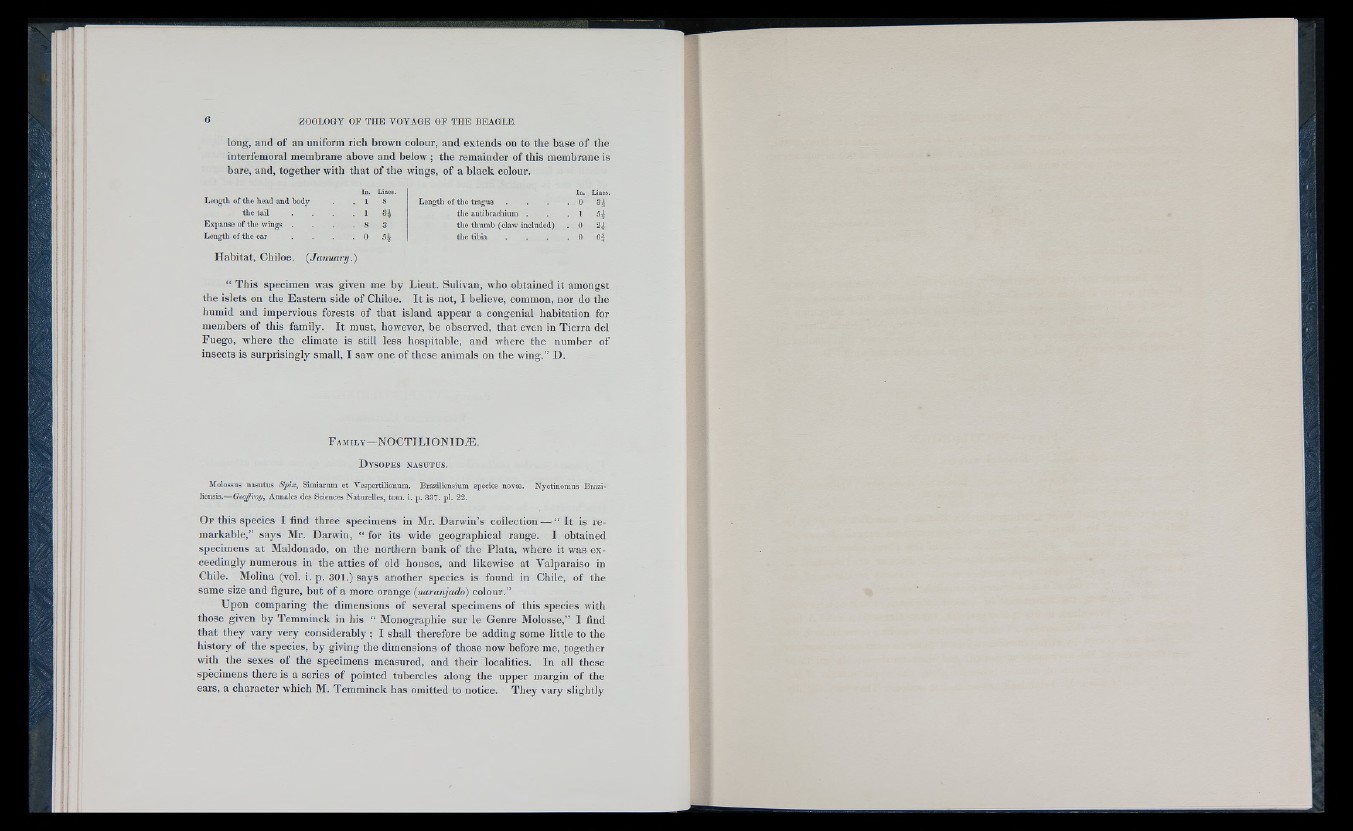
long, and of an uniform rich brown colour, and extends on to the base of the
interfemoral membrane above and below ; the remainder of this membrane is
bare, and, together with that of the wings, of a black colour.
Length of the liead and body
the tail . . .
Expanse of the wings .
Length of the ear . . .
Habitat, Chiloe. (January.)
In. Lines.
1 8
1 H
8 8
0 5k
Length of the tragus
tlie antibracbium .
the thumb (claw included)
the tibia
Itt. Lines.
0
1 5k 0 2k
0 6|
“ This specimen was given me by Lieut. Sulivan, who obtained it amongst
the islets on the Eastern side of Chiloe. It is not, I believe, common, nor do the
humid and impervious forests of that island appear a congenial habitation for
members of this family. It must, however, be observed, that even in Tierra del
Fuego, where the climate is still less hospitable, and where the number of
insects is surprisingly small, I saw one of these animals on the wing.” D.
F a m i l y — NOCTILIONIDÆ.
D y s o p e s n a s u t u s .
Molossus nasutu3 Spix, Simiarum et Vespertilionum. Braziliensium species novæ. Nyetinomus Brazi-
lieusis.— Geoffroy, Annales des Sciences Naturelles, torn. i. p. 337. pl. 22.
O f this species I find three specimens in Mr. Darwin’s collection — “ It is remarkable,”
says Mr. Darwin, “ for its wide geographical range. I obtained
specimens at Maldonado, on the northern bank of the Plata, where it was exceedingly
numerous in the attics of old bouses, and likewise at Valparaiso in
Chile. Molina (vol. i. p. 301.) says another species is found in Chile, of the
same size and figure, but of a more orange (naranjado) colour.”
Upon comparing the dimensions of several specimens of this species with
those given by Temminck in his “ Monographie sur le Genre Molosse,” I find
that they vary very considerably ; I shall therefore be adding some little to the
history of the species, by giving the dimensions of those now before me, together
with the sexes of the specimens measured, and their localities. In all these
specimens there is a series of pointed tubercles along the upper margin of the
ears, a character which M. Temminck has omitted to notice. They vary slightly